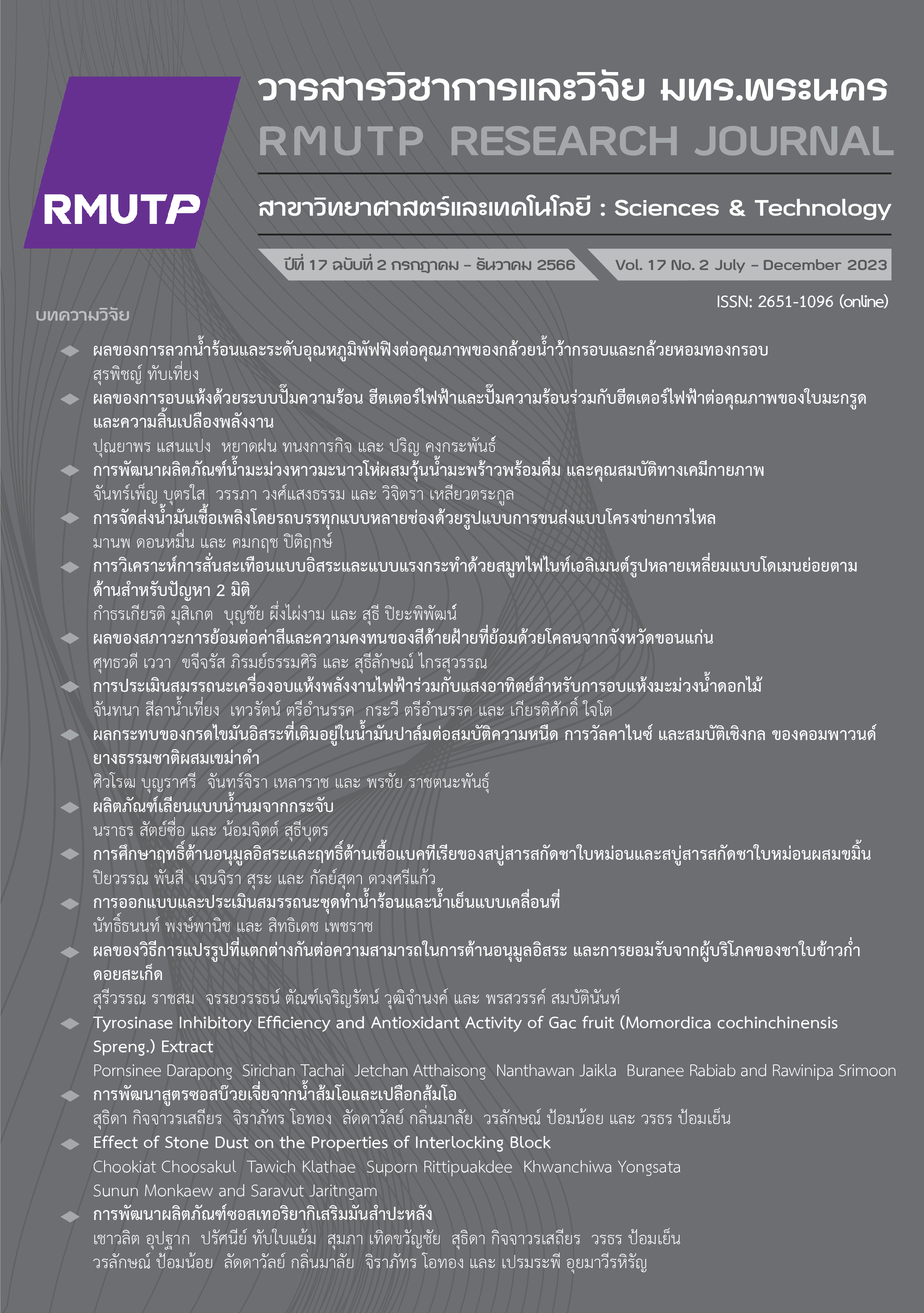Free and Forced Vibration Analysis by n-Sided Polygonal Edge-based Strain Smoothed Finite Element for 2D Problem
Main Article Content
Abstract
Free and forced vibration analyses performed by polygonal edge-based strain smoothed finite element method is presented. Problem domain is discretized into small n-sided arbitrary polygonal elements. Those elements will be further subdivided into small triangular shape according to polygonal shape edges called smoothing domains. Benchmark problem is a castellated cantilever beam. Fixed support boundary condition is imposed to left edge while downward shear traction is applied on another free ended for forced vibration analysis. Transient vibration analysis also performed using triangular linear time variation. A close-to-exact solutions obtained from finite element employed very fine mesh due to unavailable exact solutions of the example problem will be used for comparison purpose. The first six natural frequencies along with their corresponding mode shapes are investigated and found in good agreement with references. The vertical response in time of selected node for transient analysis also showed in good agreement with reference.
Article Details

This work is licensed under a Creative Commons Attribution-NonCommercial-NoDerivatives 4.0 International License.
ลิขสิทธ์ ของมหาวิทยาลัยเทคโนโลยีราชมงคลพระนครReferences
K.J. Bathe, Finite Element Procedures, New Jersey: Prentice Hall, 1996.
O.C. Zienkiewicz, R.L. Taylor and J.Z. Zhu, The Finite Element Method: Its Basis and Fundamentals, 6th ed. MA: Elsevier Butterworth-Heinemann, 2005.
T.J. Hughes, The Finite Element Method: Linear Static and Dynamic Finite Element Analysis, New York: Dover Publication, 2000.
G.R. Liu, N.T. Trung, Smoothed Finite Element Methods, Boca Raton USA: CRC Press, 2010.
W. Junchum, K. Musiket, B. Phungpaingam and S. Pongsivasathit, “Two-Dimensional plane stress analysis by smoothed finite element method using 4 smoothing cells created by an arbitrary quadrilateral element,” Engineering Journal of Research and Development vol. 32 no. 3, pp. 33-51, July-Sept. 2021.
G.R. Liu, K.Y. Dai, T.T. Nguyen, “A smoothed Finite Element Method for Mechanics Problems,” Computational Mechanics, vol. 39, no. 6, pp. 859–877, May. 2007.
K Dai, G.R. Liu and T.T. Nguyen, “An n-sided Polygonal Smoothed Finite Element Method (nSFEM) for Solid Mechanics,” Finite Elements in Analysis and Design, vol. 43, no. 11-12, pp. 847-860, Aug. 2007.
C. Jiang, X. Han, G. R. Liu, Z.-Q. Zhang, G. Yang, and G.-J. Gao, "Smoothed finite element methods (S-FEMs) with polynomial pressure projection (P3) for incompressible solids," Engineering Analysis with Boundary Elements, vol. 84, pp. 253-269, Nov. 2017.
V. Kumar and R. Metha, "Impact simulations using smoothed finite element method,” International Journal of Computational Methods, vol. 10, no. 04, pp. 1350012, Aug. 2013.
C. Jiang, Z.-Q. Zhang, X. Han, and G. R. Liu, "Selective smoothed finite element methods for extremely large deformation of anisotropic incompressible bio‐tissues," International Journal for Numerical Methods in Engineering, vol. 99, no. 8, pp. 586-610, Aug. 2014.
X. Y. Cui, Z. C. Li, H. Feng, and S. Z. Feng, "Steady and transient heat transfer analysis using a stable node-based smoothed finite element method," International Journal of Thermal Sciences, vol. 110, pp. 12-25, Dec. 2016.
P.O. Persson and G. Strang, "A simple mesh generator in MATLAB," SIAM review, vol. 46, no. 2, pp. 329-345, 2004.
D.L. Logan, A first course in the finite element method, 6th ed. Boston USA: PWS Engineering, 2017.
E.L. Wilson, K.J. Bathe and F.E. Peterson, “Finite element analysis of linear and nonlinear heat transfer.” Nuclear engineering and design, vol. 29, no. 1, pp. 110-24, Nov. 1974.

